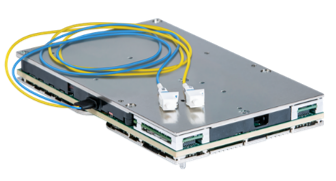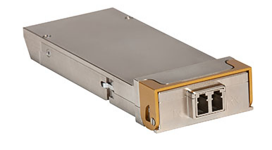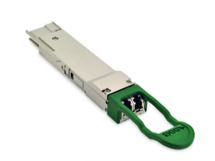Are 400GZR+ Pluggables an Embedded 800G Giant Killer?
Heading to 400G Lanes
We are now at the start of an era where 400GbE is breaking out of data centers and displacing 100GbE as the dominant client interface requiring wide-area optical transport. This is resulting in 400G lanes becoming the new building block of optical networks to transport existing 100GbE and growing 400GbE client traffic, for both metro and long haul applications.
Methods for Creating 400G Lanes
Until now, the only way to create 400G lanes was using proprietary embedded transceiver technology, which features an impressive ability to create single wavelengths up to 800G. Embedded means that these transceivers are hard-wired into transponder and muxponder line cards. For metro applications, this technology can create two 400G lanes in a single 800G wavelength, to carry for example, 4x100GbE and 1x400GbE clients. For long-haul applications, this technology downshifts to a single 400G wavelength. While 800G embedded technology has received widespread buzz over the past year, it is now no longer the only game in town.
Newly arrived players are 400GZR+ transceiver pluggables, designed to deliver up to 400G wavelengths. These plug into the faceplate of a line card, and because they conform to industry-standard form factors and connector interfaces, one supplier’s pluggable can be swapped with another’s, when a better or cheaper pluggable comes long.
| Embedded Modules | CFP2 DCO | QSFP-DD |
|---|---|---|
|
|
|
|
|
|
|
As you may have already guessed from the quote above, we show how two 400GZR+ transceiver wavelengths deliver better cost-performance than a single 800G embedded transceiver wavelength, for both metro and long haul applications.
Embedded 800G Giant Killer - The 400GZR+
Embedded 800G Giant KillerThe 400GZR+ pluggables come in two sizes, small and medium. The small type, called QSFP-DD, is targeted for plugging directly into routers. Due to its small size it is has limited signal launch power, and will be used primarily for point-to-point connections or transport over simple ROADM networks. The medium-sized pluggable, called CFP2-DCO (C form factor pluggable type 2 – digital coherent optics) features the same signal launch power as the embedded 800G modules, albeit it delivers only up to 400G wavelengths. Nevertheless, because they have this same launch power, they can compete directly against 800G embedded technology for metro and long haul applications over sophisticated high-port count colorless-directionless-contentionless ROADM networks. In this blog, we focus on the potential of these CFP2-DCO pluggables.
Let’s look at performance first. When comparing two transmission schemes, the scheme that uses less dense modulation will always propagate further under common fiber and amplification conditions. The reason for this is that the carrier sine wave has fewer phase and amplitude modes, so that these modes can transmit further before they begin smearing together making them indistinguishable at the receiver. For example, transmission using 8-QAM (3 bits per symbol using 8 modes) will propagate further than transmission using denser 16-QAM (4 bits per symbol using 16 modes).
The table below summarizes how the two types of transceiver compare. (If you want to do the math, the equation is Modulation Density = Line Rate / [Baud Rate x 2 Polarizations x 80% FEC OH].) This translates practically to 400GZR+ providing twice the distance performance in metro and about a 20% advantage in long haul.
|
Transceiver Type |
Baud |
Metro Applications (100s of kilometers) |
Long Haul Applications (Few thousand kilometers) |
||
|
Single Wavelength Line Rate |
Modulation Density |
Single Wavelength Line Rate |
Modulation Density |
||
|
Pluggable 400GZR+ |
64Gbaud |
400G |
3.9 bits/symbol |
200G |
1.9 bits/symbol |
|
Embedded 800G |
95Gbaud |
800G |
5.3 bits/symbol |
400G |
2.6 bits/symbol |
400GZR+ CFP2-DCO Pluggable Cost
At this point, you might say, “hold your horses” and argue that while 400GZR+ is going further, the embedded 800G wavelengths are going twice as fast. That is correct, which is why we now also need to consider cost. The cost of a 400GZR+ CFP2-DCO pluggable is at least half the cost of an embedded 800G transceiver module. There are two reasons. It is much simpler, supporting only up to 400G, and it has multiple suppliers driving down costs of the underlying technologies and creating price competition. The result is that 400GZR+ can provide two wavelengths at an equivalent cost of a single embedded 800G wavelength.
At Ribbon, we have capitalized on these 400GZR+ performance and cost advantages in a newly released TM400_2 line card. This is dual 400G transponder/muxponder that is first-to-market using 400GZR+ technology implemented in CFP2-DCO pluggables. Its unique design features an internal switch that allows using its two pluggables either independently or in a dual coupled-wavelength mode.
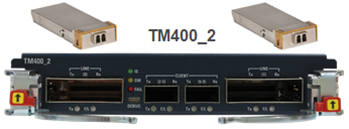
400GZR+ for Longhaul Applications
Building on the above discussion, for metro applications, the TM400_2 transmits two 400G wavelengths for twice the distance of a single 800G wavelength of an embedded solution, at an equivalent cost. Moreover, its modular design enables “pay as you grow”, incrementally adding 400G wavelengths one pluggable at a time as traffic increases.
For long haul applications, the TM400_2 combines two 200G wavelengths with the highest-performance QPSK modulation to create a 400G lane that transmits 20% further than a 400G wavelength from an embedded (800G) solution, again at an equivalent cost.
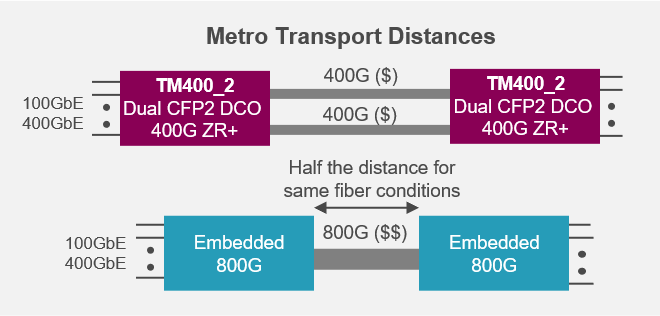
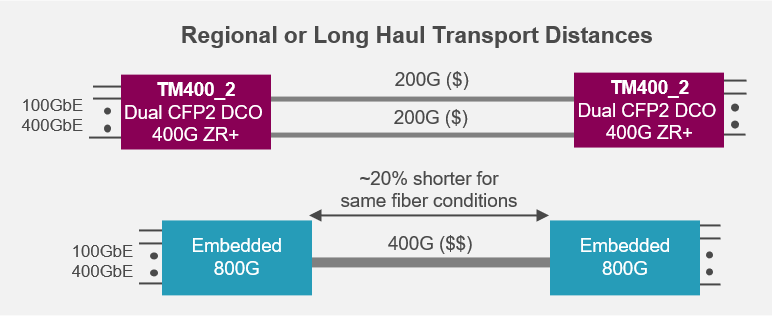
In summary, 400GZR+ is a disruptive technology that provides a new and more cost-effective way to build optical transport networks. To learn more about how Ribbon is deploying 400GZR+ download our whitepaper.
For questions or comments, please contact the author directly at jonahan.homa@rbbn.com.

